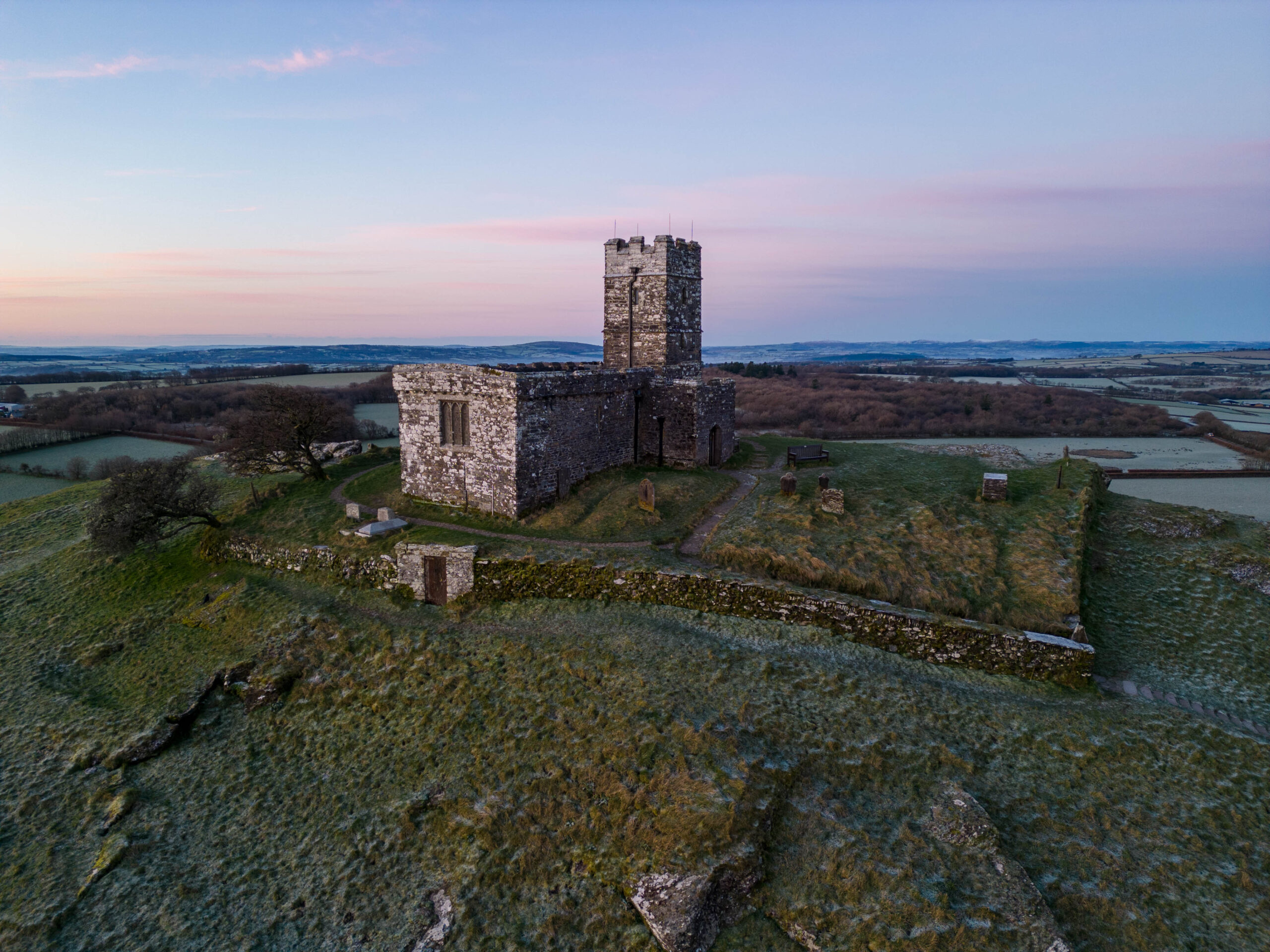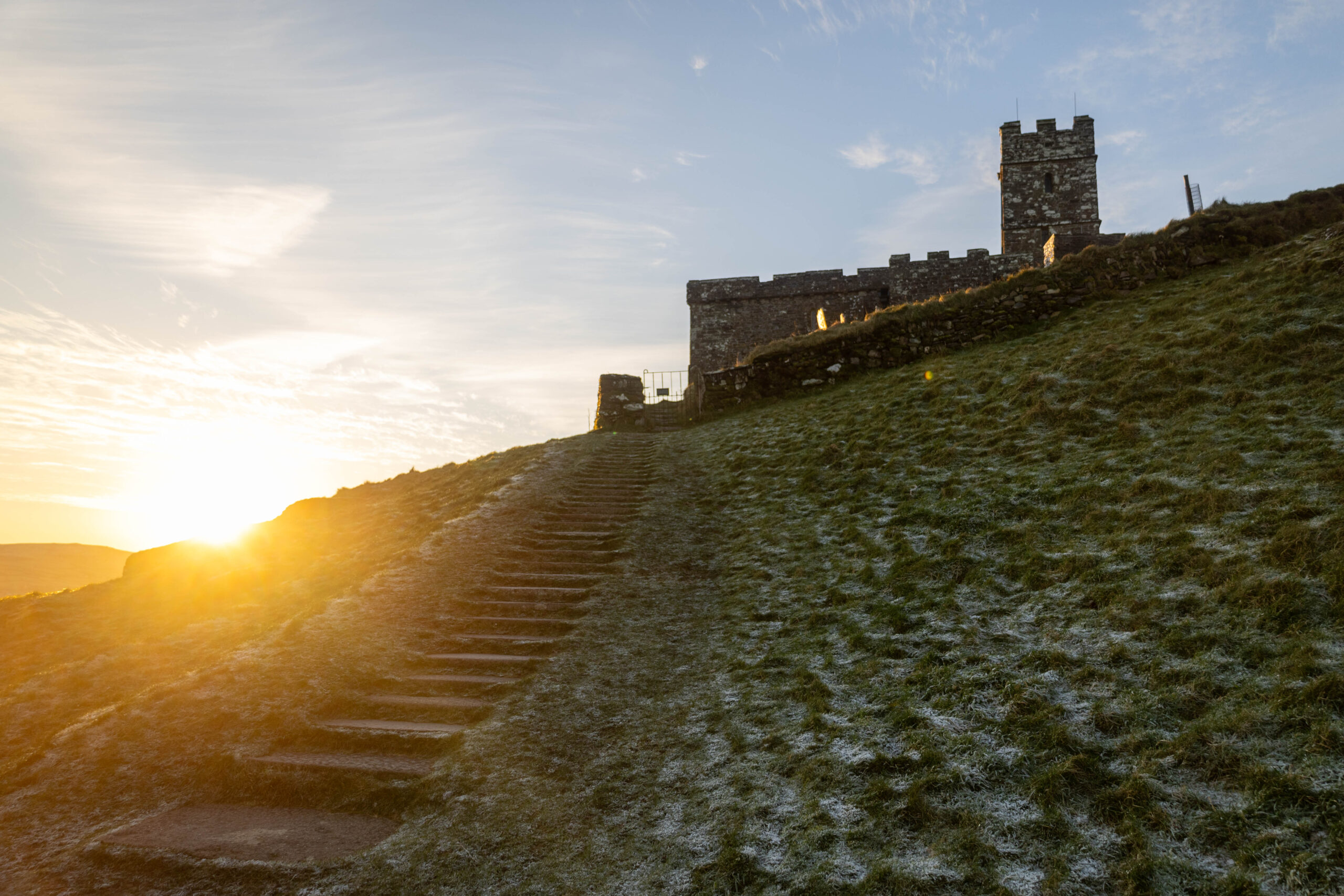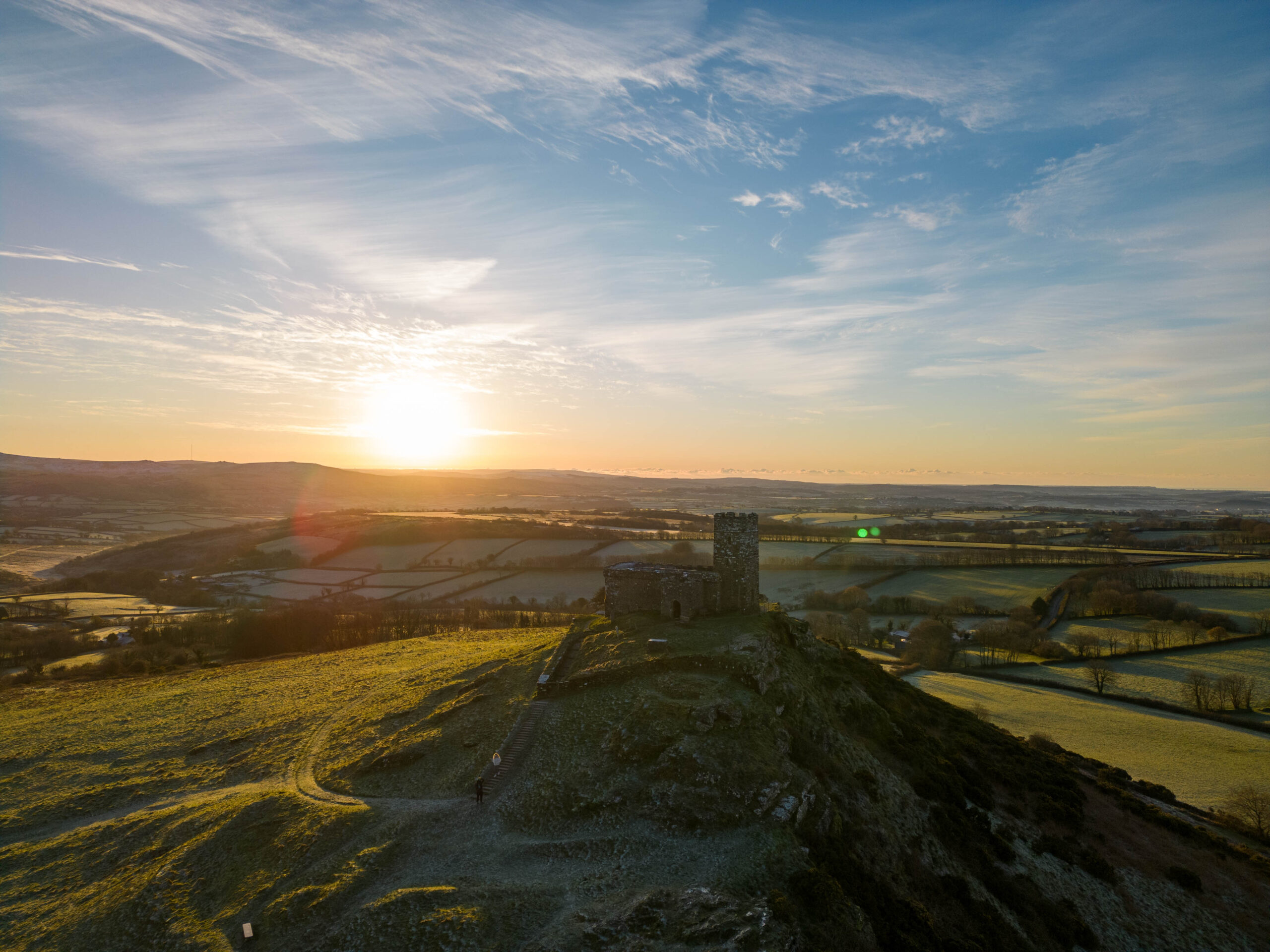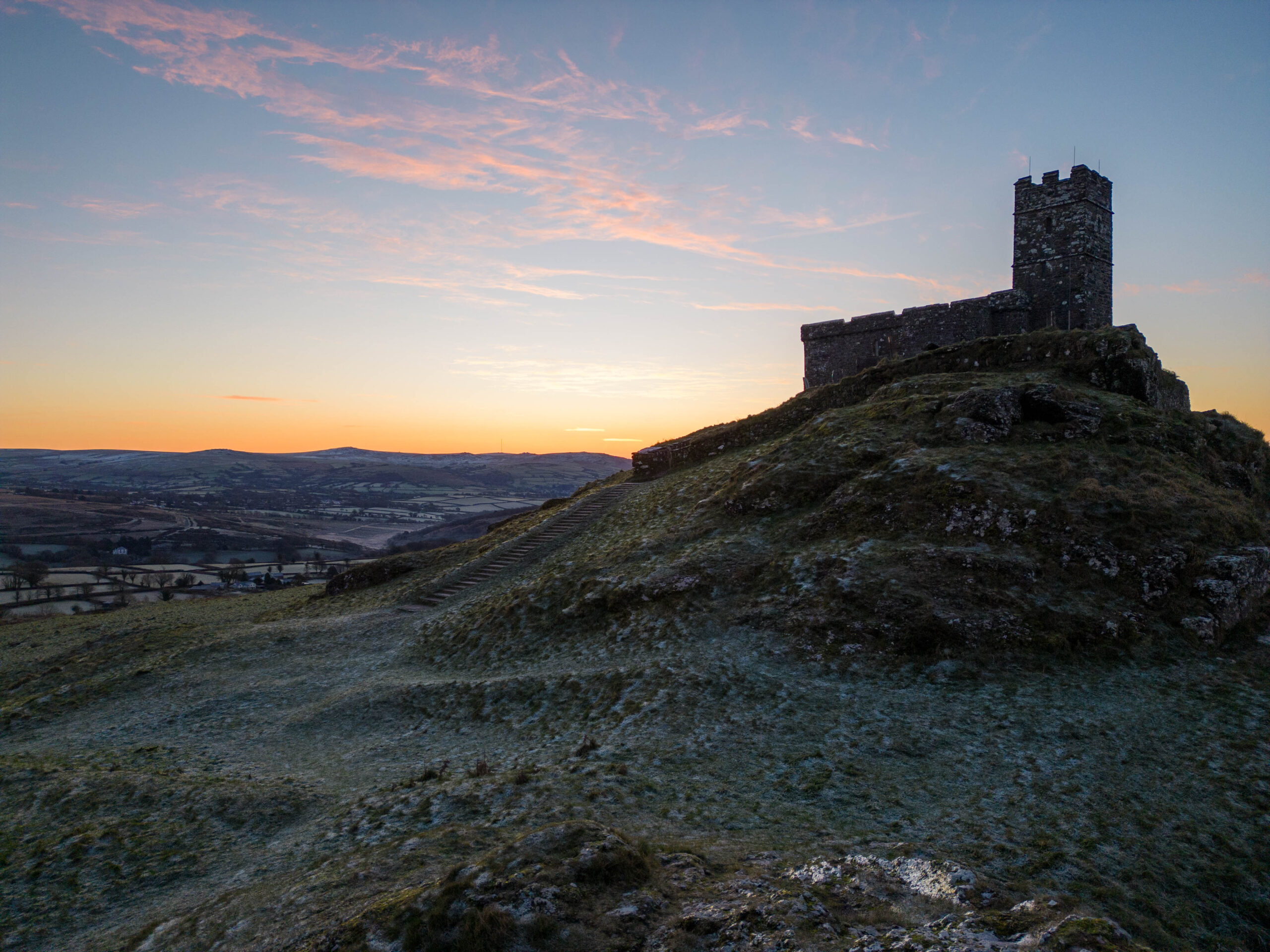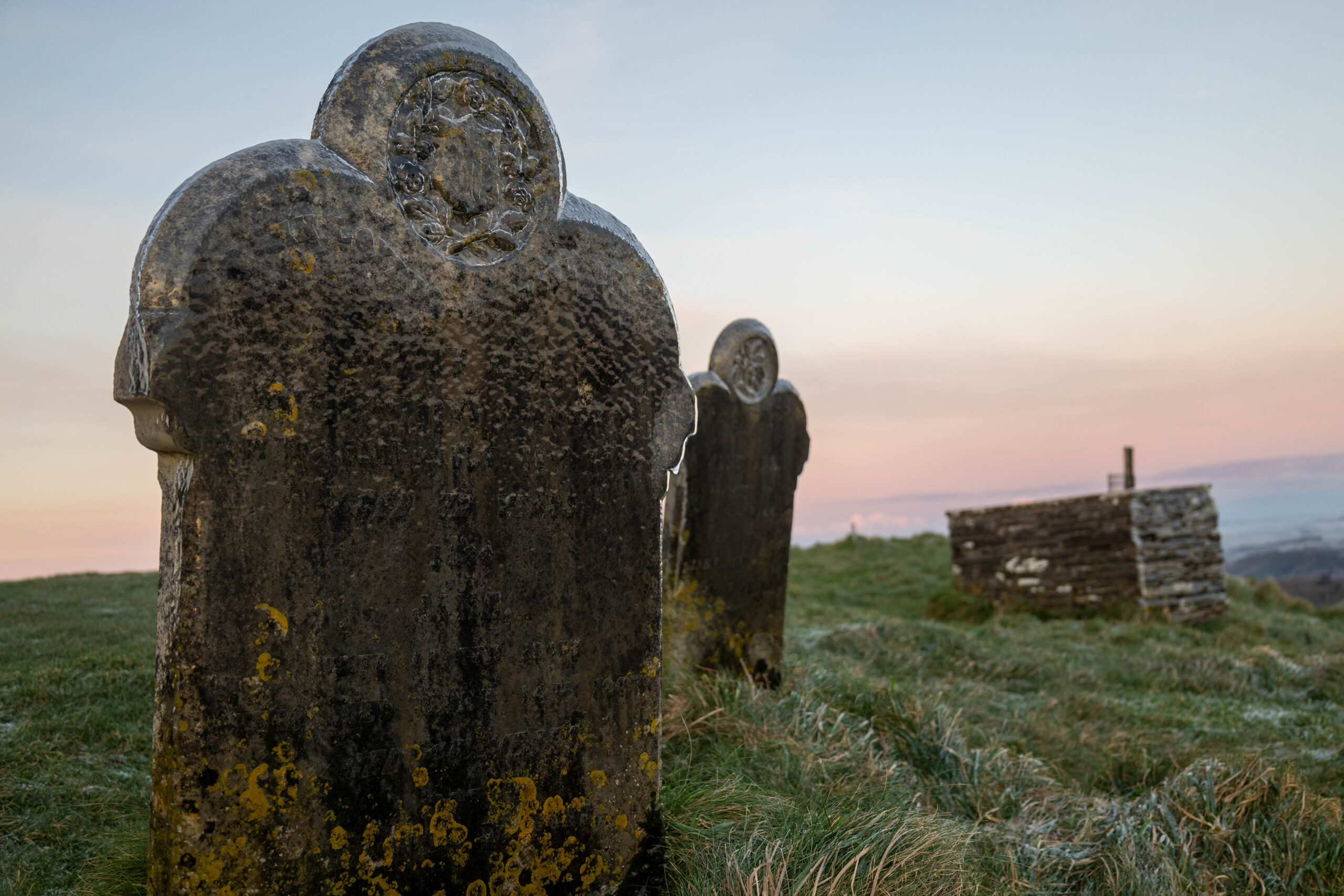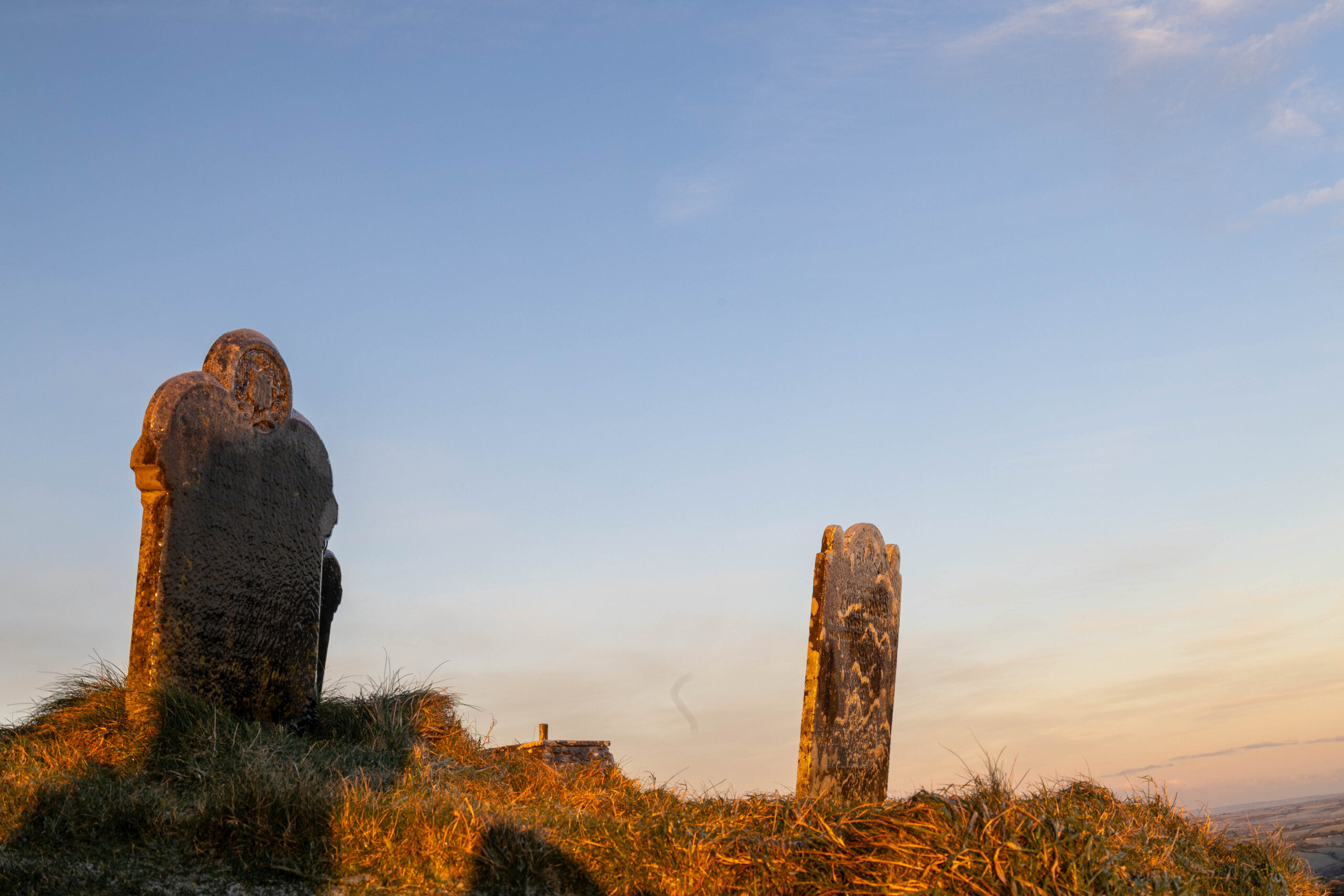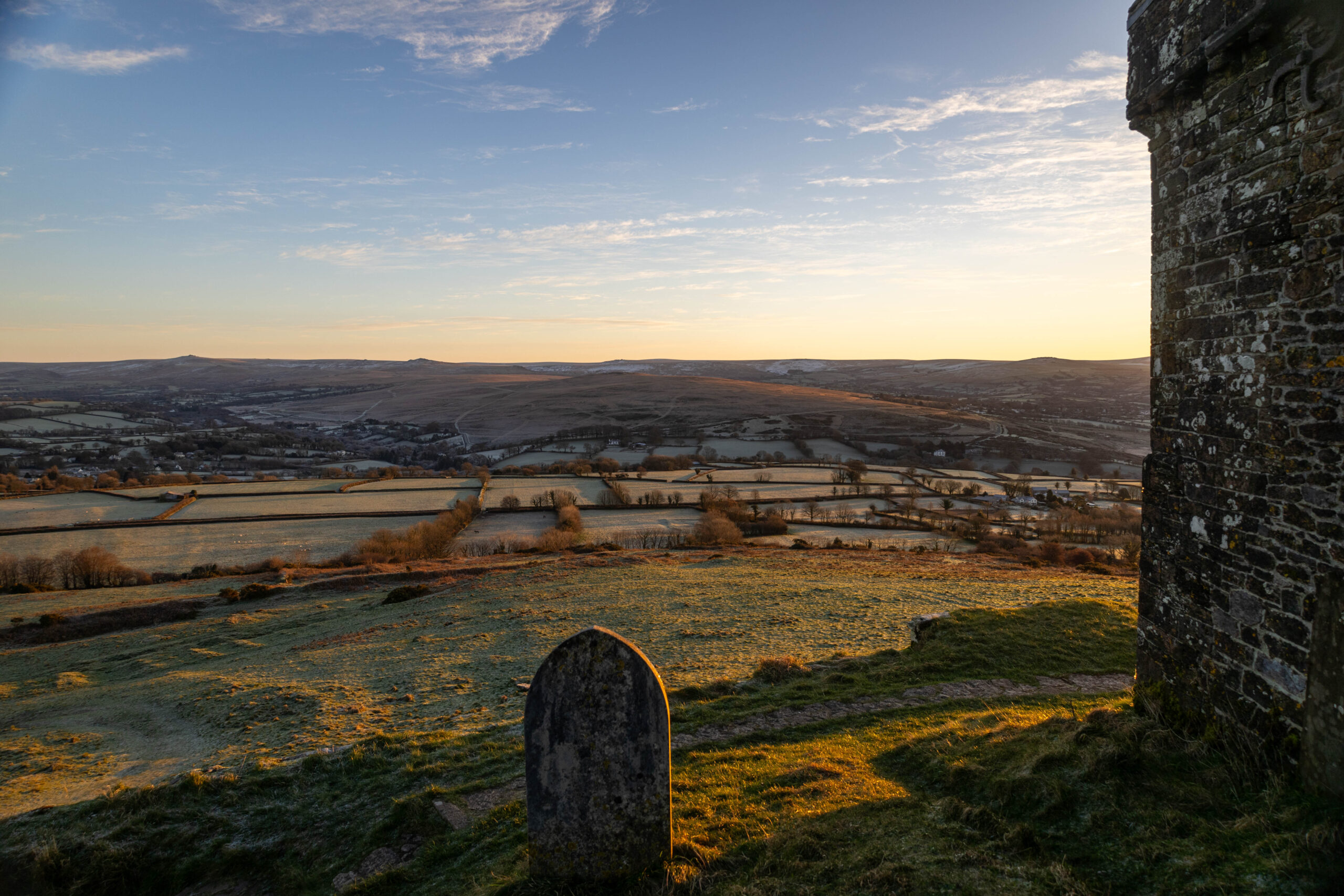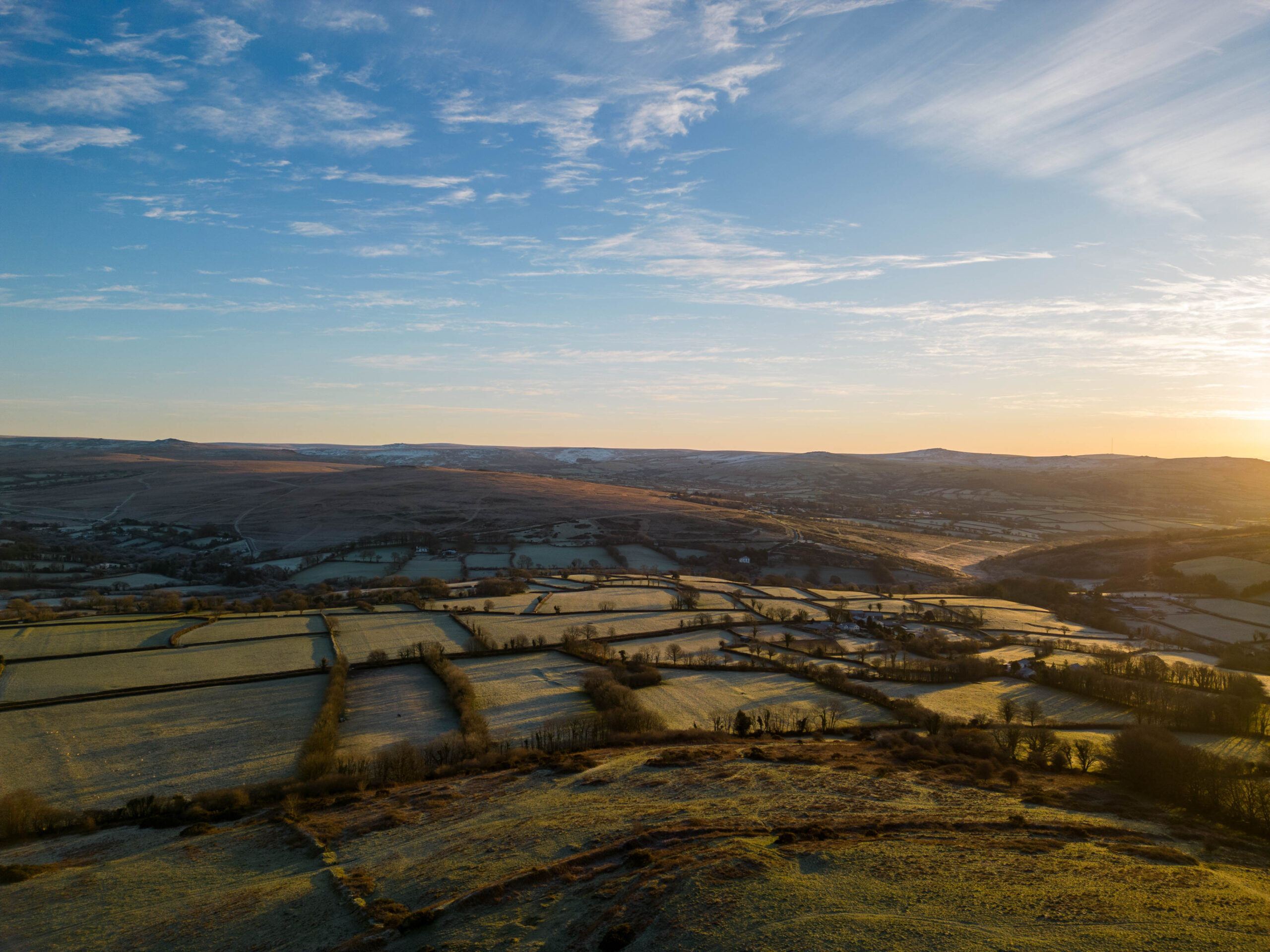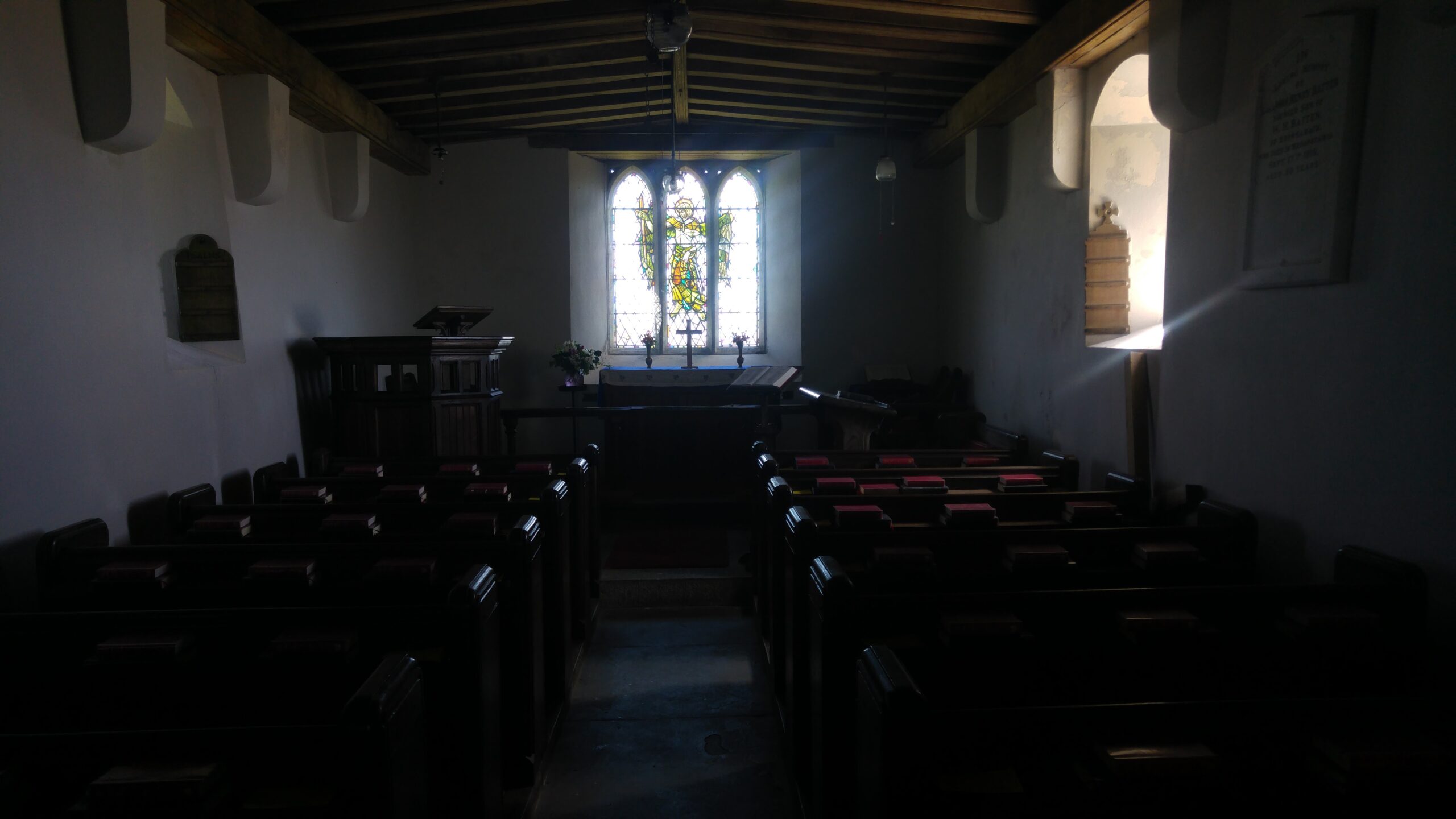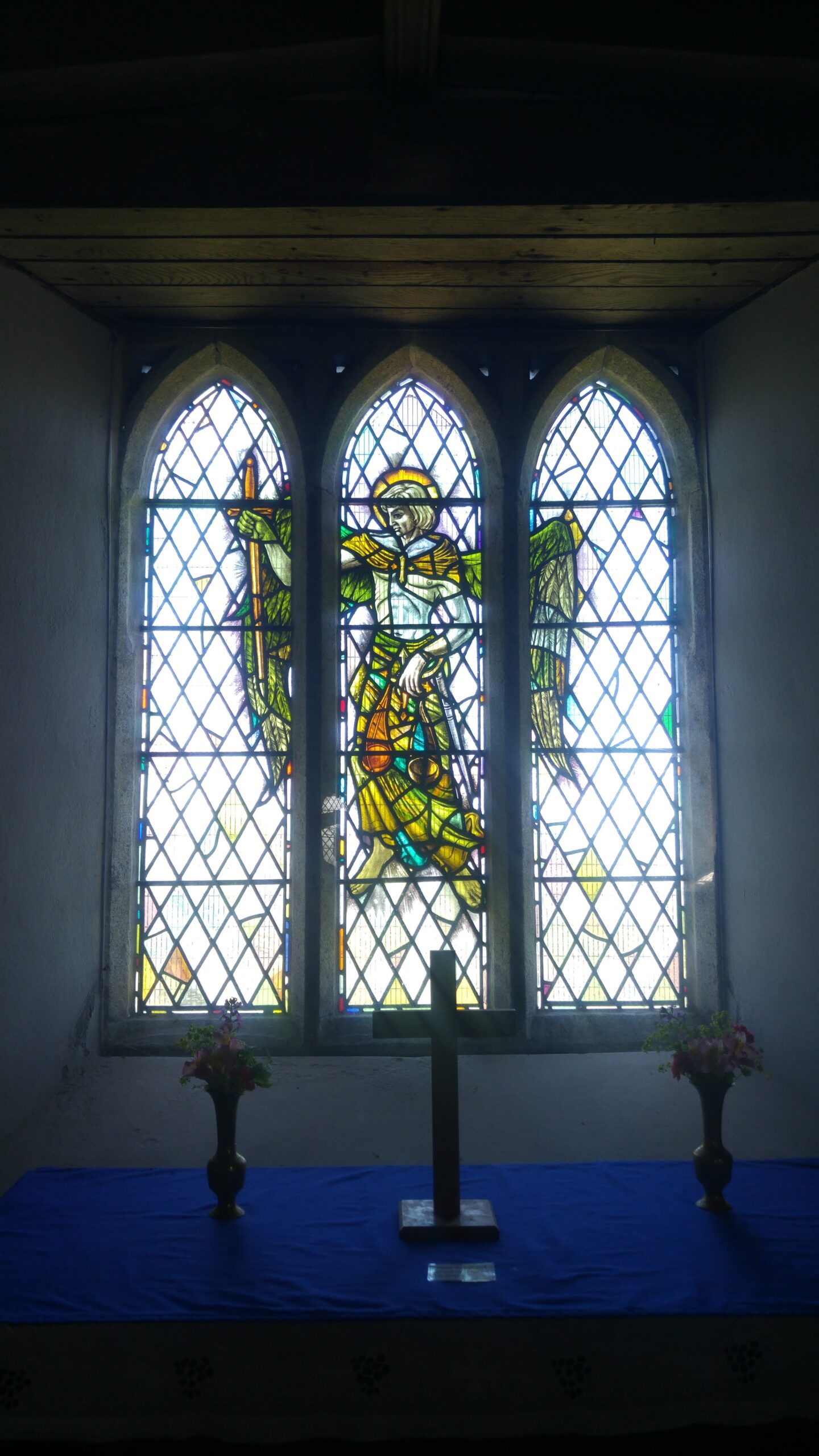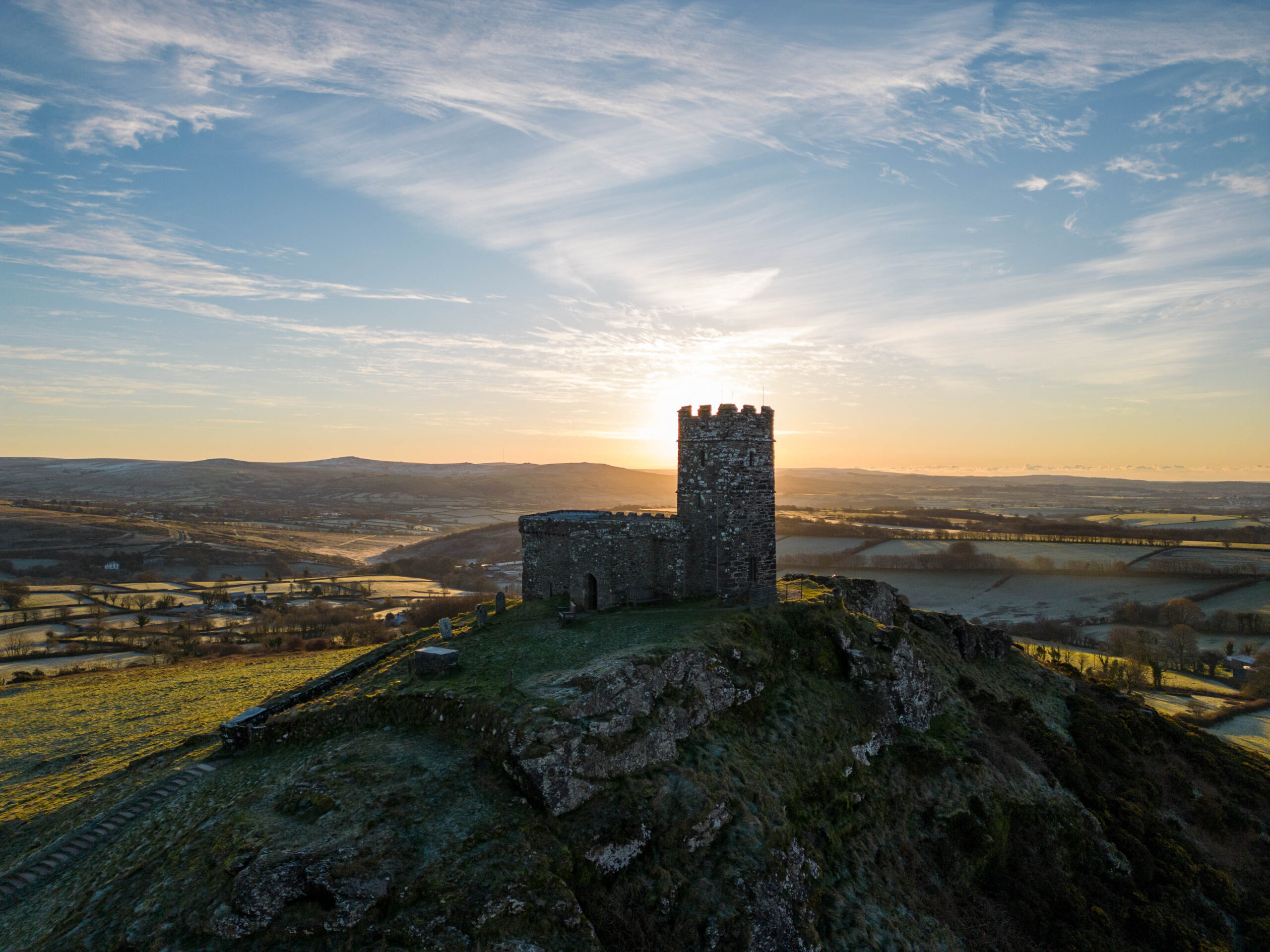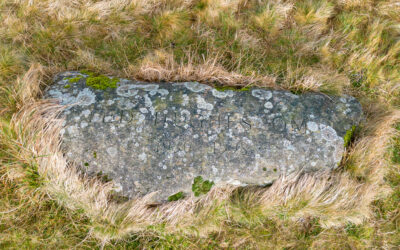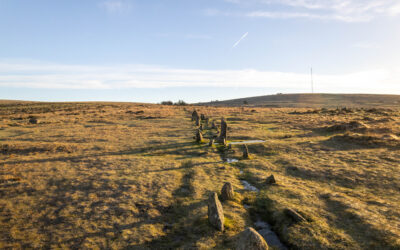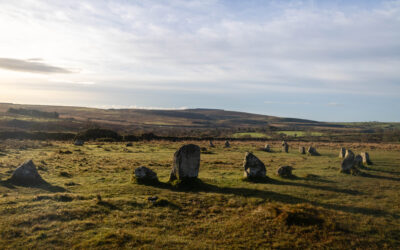Brent Tor Church
Mystical Old Church
The church of St Michael de Rupe (of the Rock) has a unique location atop the rocky outcrop of Brent Tor, rising above 335 metres above sea level.
In fact, unlike most of the tors on Dartmoor, Brent Tor is made of basalt, being an extinct volcano.
It’s a landmark for many miles around, visible even from the seas around Plymouth, and itself has a wonderful view over the rolling hills of the western moor to one side, and Bodmin Moor to the other.
It was built in the 12th Century originally, with various renovations over the centuries. The style is Norman, with a tiny Chancel overlooked by a stained glass window of the Archangel Saint. Several rows of small pews fill the nave, enough for about 40 people, and at the back, near the entrance, is a bell tower. The church still functions during summer months, and is an intimate venue for weddings and carol singing.
Outside there is a small graveyard with a few gravestones from the 1800s as well as some gnarled hawthorns.
Sabine Baring-Gould is a name that often recurs when reading about ancient Dartmoor: he was a Victorian antiquarian and scholar of the eclectic who wrote about many of the sites on the moor which he knew well. Among his other claims to fame were the hymn “Onward, Christian Soldiers!” and a gothic novella “Margery of Quether” which was an early precursor to the vampire genre, and indeed an inspiration to Bram Stoker before he wrote Dracula.
Baring-Gould incorporated many Devonian legends into his storytelling, as well as some real-world settings, including Brent Tor:
“At the very highest point of the moor an extinct volcano cone protrudes, and rises to the height of about twelve hundred feet. This is called Brentor, and it is crowned with a church, the very tiniest in the world I should suppose, but tiny as it is, it has chancel, nave, porch, and west tower like any Christian parish church. There is also a graveyard around the church. This occupies a little platform on the top of the mountain, and there is absolutely no room there for anything else. To the west, the rocks are quite precipitous, but the peak can be ascended from the east up a steep grass slope strewn with pumice.”
There are other legends associated with the site: a shipwrecked merchant supposedly prayed to St Michael, promising to build a church on the first land he saw, should he live. Miraculously he did, and thus built this church. There are legends that the devil tried to prevent the work being done by hurling stones down from the top of the rock, only to be thwarted by angels replacing them.
When I visited, the ground was blanketed in frost. The gravestones had a patina of ice over them. The morning light creeping over the moors was glorious, and it was easy to see why this location was chosen for a church. There are many worse places to spend eternity watching the sun rises.
Other Noteworthy Places…
Ted Hughes Memorial
The memorial to the poet Ted Hughes is to be found near the source of one of his favourite rivers, the Taw in North Devon
Merrivale Complex
The Merrivale Complex of stone rows, cists and stone circles is easy to find on Dartmoor – a must-see if you’re interested in ancient stones!
Ringmoor & Brisworthy Stone Circles
On the southern edge of Dartmoor you can find Brisworthy Stone circle – a beautiful circle in wonderful surroundings. A short hop away there’s also the Ringmoor Down circle and avenue.

